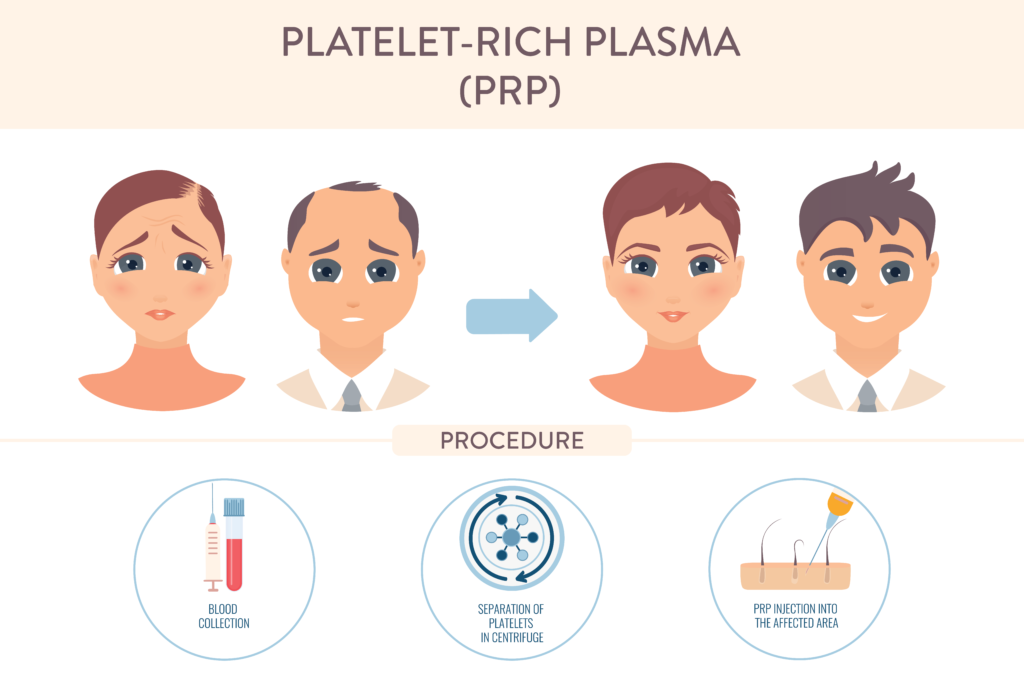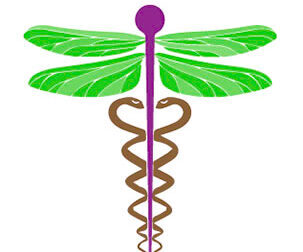Hair Rejuvenation

What is Hair Rejuvenation?
PRP hair rejuvenation is an exciting non-surgical therapeutic option for patients who require stimulation of hair growth for hair loss conditions.
Recent scientific research and technology provides the medical community with new understandings of wound and tissue healing. As a result of these scientific studies, we recognize PRP is an all-natural autologous medical procedure which is performed in physicians offices for scalp, skin, and hair stimulation.
We offer two types of PRP hair rejuvenation to our patients. They are:
- Traditional PRP
- Enhanced PRP with placental stem cells
Platelet-rich plasma: Does the cure for hair loss lie within our blood?
Platelet-rich plasma, or PRP, is derived from the bloodstream and has been used for years to treat musculoskeletal conditions, and more recently, skin conditions. Colloquially termed “vampire” treatments, PRP injected into the skin or used after microneedling (a technique that uses small needles to create microscopic skin wounds) may help to improve skin texture and appearance. Recently, PRP has garnered attention as a promising solution for one of the most challenging problems in dermatology: hair loss.
Platelets and hair growth: What’s the connection?
Platelets are one of four primary components of blood (the other three are red blood cells, white blood cells, and plasma). Platelets promote cell growth and regeneration. As the term “platelet-rich plasma” suggests, platelets are generally about five times more concentrated in PRP than in regular blood. This concentration of platelets is useful, because platelets secrete growth factors than are thought to assist in wound healing and tissue regrowth.
When it comes to hair loss, the theory is that platelets, injected deep into the scalp to reach the bottom of the hair follicle, may stimulate a specialized population of cells named dermal papilla cells, which play a critical role in hair growth.
Obtaining and injecting platelet-rich plasma
The process of obtaining PRP involves a blood draw and a centrifuge. To yield PRP, blood is drawn from your arm, then spun down in a centrifuge (a machine that spins at high speeds to help separate blood components). After centrifuging, the plasma rises to the top, and the lower part of the plasma is the PRP. Sometimes, a second spin is performed to increase the platelet concentration of the plasma.
Your own PRP is collected, then injected into multiple areas of hair loss across your scalp.
You will see improvement after the first treatment but we find the best results occur after 4 treatments performed one month apart.
PRP contains many growth factors that stimulate the hair follicle’s reactivation, however this does not treat the underlying reason for the initial hair loss so we recommend a once a year treatment to maintain the hair growth.
PRP specific cells that stimulate hair growth include:
- Platelet-Derived Growth Factor (PDGF)—promotes blood vessel growth, cell replication, skin formation
- Transforming Growth-Factor-Beta (TGF-b)—promotes growth of matrix between cells, bone metabolism
- Vascular Endothelial Growth Factor (VEGF)—promotes blood vessel formation
- Epidermal Growth Factor (EGF)—promotes cell growth and differentiation, blood vessel formation, collagen formation
- Fibroblast Growth Factor-2 (FGF-2)—promotes growth of specialized cells and blood vessel formation
- Insulin Like Growth Factor – (IGF)—a regulator of normal physiology in nearly every type of cell in the body
Evidence for platelet-rich plasma is stronger for some types of hair loss than others
Most research on PRP for hair loss has focused on its use to treat androgenetic alopecia (AGA). Also known as hormone-related baldness, this is a condition that can affect both men and women. In men with AGA, hair loss typically occurs on the top and front of the head. In women, thinning occurs on the top and crown of the head and often begins with the center hair part growing wider.
There is not enough evidence to make conclusions about the effectiveness of PRP for other types of hair loss, like telogen effluvium (stress-related hair loss), alopecia areata (autoimmune-related non-scarring hair loss), or forms of scarring hair loss.
I want to get my hair back!
Fill this out and we will get back to you as soon as we can. If you want to make an appointment, call us at 949-610-9950!


